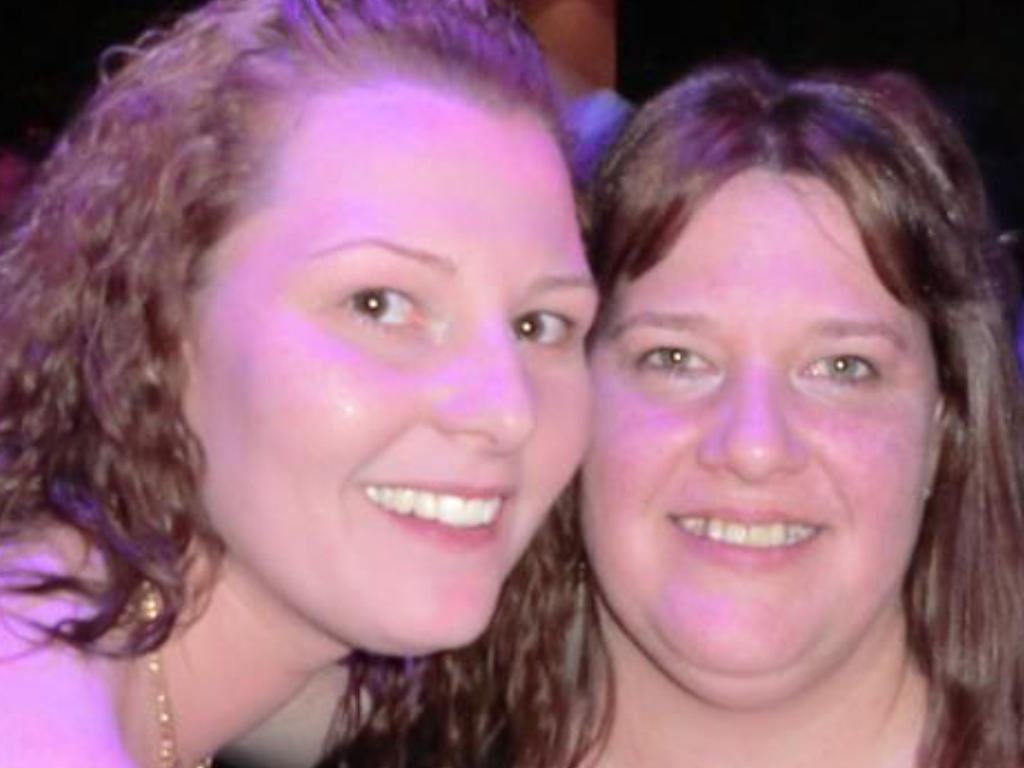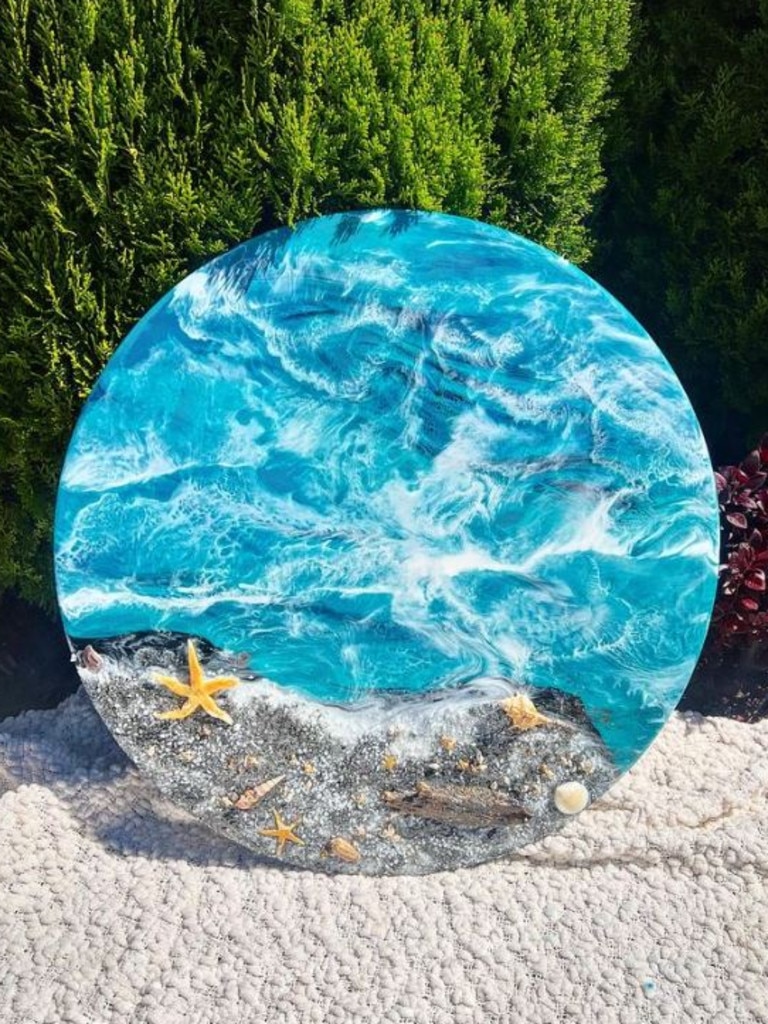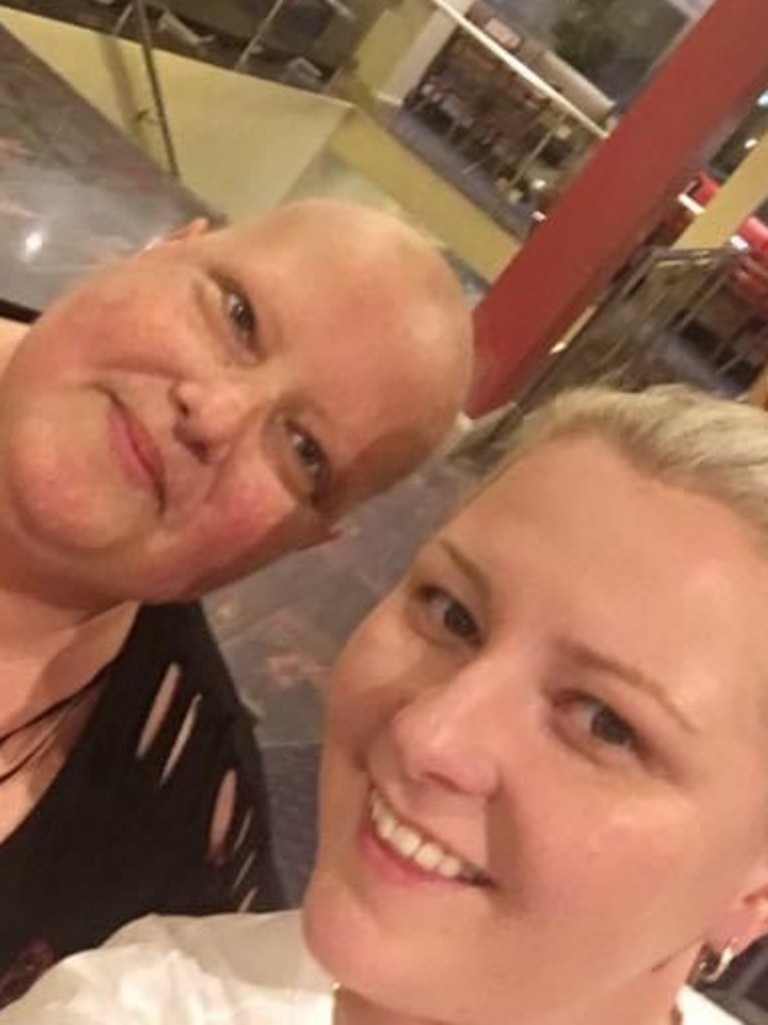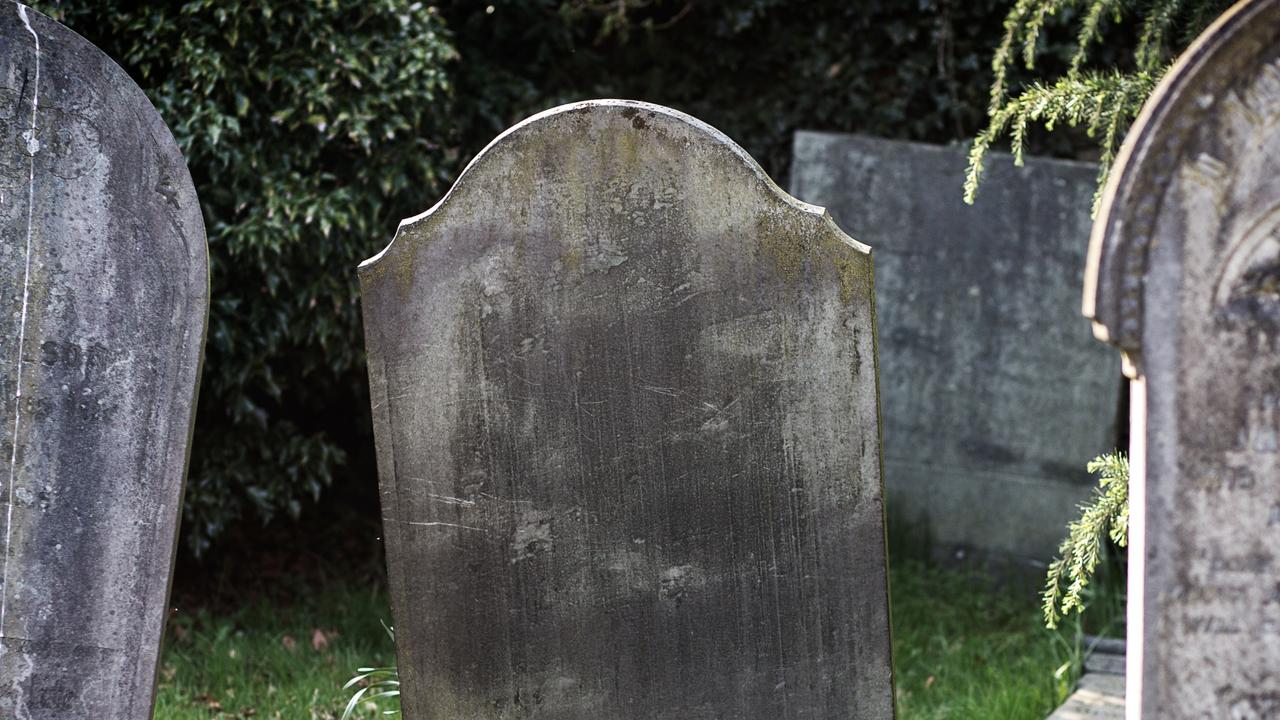Woman honours promise after sister’s death through memorial artwork
As more Aussies opt for cremation, one woman decided on a unique way to honour her sister after she died.
Before Elizabeth O’Connor died, she asked her family to promise her one thing.
“She didn’t want us to forget her,” her sister, Audrey Stewart, explained.
The 39-year-old lost her life to breast cancer in 2017, five years after being diagnosed with the disease.
Wanting to be remembered after her death, Ms O’Connor – a strong, caring and bubbly mother of one – decided she didn’t want a traditional burial in a cemetery.
“When it’s a cemetery, at first you might go see your loved one once every week or so. But then as the years go on, you go less and less. It’s not because you don’t care, it’s because life gets is in the way,” Ms Stewart told news.com.au.
Instead, Ms O’Connor asked to be cremated so her ashes could be shared with her loved ones.
“She just wanted everybody to have some of her. My sisters and I wear a necklace with her ashes in it, so she’s always with someone, and she’s always going somewhere.”
This year, however, Ms Stewart felt the timing was right to honour her sister in a new way – by having her ashes incorporated in a piece of artwork to capture the essence of who she was.
“It’s something positive,” the 37-year-old explained.
“Artworks create that opportunity to think of your (loved ones). You get to walk past it multiple times a day, and it puts a smile on your face. You don’t walk past it and get sad like you would it if was a photo of them before they passed.”

To create the piece, Ms Stewart enlisted the help of Sydney artist and owner of Mini Murray and Me, Jazmin Murray.
Ms Murray has spent over a year incorporating ashes into art after she originally set out to preserve flowers from her wedding and soon received messages from people asking if she could create art with funeral flowers and ashes.
Since then, she has created over 20 pieces of artwork with ashes as more Aussies turn to cremation and new ways to memorialise loved ones continue to emerge.
“I found ashes hold so much sadness in something like (an urn). They’re not being celebrated, they’re not being remembered,” Ms Murray told news.com.au.
“An art piece speaks a thousand words and I wanted to create something so beautiful that can be on the wall and they can look at every day and they can remember that holiday or when they went to the beach.”
“People get overjoyed, and they sometimes cry when they see (the finished piece). They always say it’s such a good idea, I wish I had known about it earlier.”

Before creating the art, Ms Murray starts out by discussing the colours and style of the piece with a family member, who may chose to incorporate the ashes of a loved one or pet on a canvas or even a clock depicting into an ocean or rainbow scene.
“Some people are very specific … they want me to match colours with something that was in someone’s room or a favourite toy.”
For her sister’s piece, Ms Stewart decided to have Ms O’Connor’s ashes incorporated in a beach with grey sand and brightly coloured water, as it reminded her of a fear her sister conquered before she passed.
“We used to live in Hervey Bay but she’d never been in the beach her whole life, she had a phobia of sharks. She didn’t let her son ever go on a boat,” Ms Stewart explained.
“But before she died, she went on a cruise, and (my family) FaceTimed me, and my sister was in the water up to her neck. It was a big thing, I was so proud of her.”
To replicate the ocean in the piece, Ms Murray layered multiple shades of blue resin to depict waves before using white resin to create a ripple effect.

She decorated the piece with shells, starfish and sand before carefully spreading the ashes over the canvas.
“The ashes combine in with the sand so someone seeing it in your home might not know it’s ashes. It all flows in really well,” said Ms Murray.


Each artwork can take between days or weeks to complete, depending on the design.
Ms Stewart said she was overcome with a wave of emotion and gratitude when she saw the finished piece honouring her sister.
“I was sad because my sister passed, but I felt honoured and blessed. It just everything. All my emotions came through all at once throughout my body.”
“Everyone has urns but my sister was definitely one of a kind. So something like this fits her perfectly.”


Aussies turning to cremation
The decision to be cremated is growing increasingly common among Aussies, with about 70 per cent of Australian funerals now involving cremation, according to the Salvation Army.
“Cremation has been growing since the end of World War Two,” Dr Hannah Gould, a cultural anthropologist at the University of Melbourne told news.com.au.
“We’ve gone from a situation in World War Two where we’ve had a majority of burial, and then it has slowly, gradually, gradually been building towards the current state.”
Dr Gould said the rise in secularism and urbanisation – as people flock to the cities – as well as increased costs, are major factors behind the growing trend.
According the to federal government’s money smart website, a basic cremation cost from $4,000 and “more elaborate” funerals cost $15,000,
While research is limited into the display of ashes, Dr Gould said there has also been a recent increase in people offering more creative ways to memorialise loved ones.
“The urn on a mantel piece is quite traditional but it’s never really been something Australians have particularly learned toward like in the UK and the US.”
“Most notably, In recent years, (there has been in increase in services involving) ashes in artistic and creative projects – whether that be the incorporation of ashes into jewellery, or the incorporation of ashes into home decor items”.

It comes as Australia is grappling with a shortage of burial space, with a 2020 report finding all of Sydney’s public cemeteries would be full by 2032.
Dr Gould said creative ways of displaying ashes could open up new ways of thinking about how, as a society, we can memorise loved ones while trying to meet the population’s growing needs.
“70 per cent of us have adopted cremation but Australia, in my opinion, hasn’t really worked out what to do with the ashes afterwards,” said Dr Gould.
“I think all of these creative solutions and different proposals are really fascinating and prompt us to really think about what kind of relationship we actually want to have with the deceased for generations to come.
“What do we want to do with them and what could we do with them? Are there different possibilities we haven’t thought about yet?”
For now, Ms Stewart’s artwork is proudly on display in her home where her two children can remember Ms O’Connor – and a promise that was well kept.
“Every time we walk past her, we can say ‘hi’. Everyone can be with her.”






